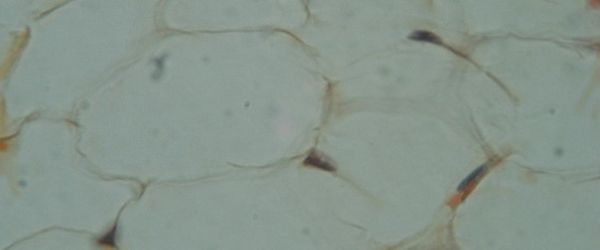I recently moved to a different research institute and was happy to discover that my new lab had not one but several different kits for yeast genomic DNA isolation. I like trying new kits and protocols. I especially like trying new kits when they promise, like the Olympics, to yield results that are “Swifter, Higher, Stronger”. However, in this case, I should have been alarmed by the variety of kits, rather than encouraged by it. An array of kits means that the people in the lab are still looking.
A secondary warning sign should have been the phrase “take your bacterial cells…” in one of the kit protocols. The phrase clearly had been copied from a bacterial manual. While both bacteria and yeast are single-cell organisms, they are not interchangeable. For example, yeast have a nucleus and cytoskeleton—unlike bacterial cells.
In the end, one of the kits failed to produce DNA of reasonable quality. The other kit resulted in usable DNA but with a low concentration. My labmates obtained similar results. I think I’ll stick to the tried and true DIY prep for a while.
Why Use a DIY Method for DNA Isolation?
Unlike with kits, there are no propriety reagents in a DIY protocol. You know what exactly is in each reagent. Knowing the composition of your reagents makes troubleshooting that much easier. You can test or buy new components of a solution. Also, you can use only the amount of RNase you need in each reaction, which is more laboratory budget friendly. You could also customize the method. If you aren’t getting an appropriate yield, you can increase the number of cells you start with or increase the ethanol precipitation time at step nine.
This protocol was initially proposed as a method for recovering plasmids from yeast—you simply transform a couple of microliters of the resulting prep into E. coli—but it is now routinely used for whole genomic DNA extraction.
Do-It-Yourself Protocol for Yeast Genomic DNA Isolation
- Grow 10 ml yeast culture in YPD at 30°C to saturation, preferably overnight.
- Collect cells by centrifugation and place the tubes on ice.
- Decant the supernatant and suspend the pellet in 0.5 mL of water. Transfer the cells to a 1.5 mL screw-top tube.
- Collect cells by centrifugation. Decant the supernatant and suspend the cell pellet in the residual liquid by vortexing.
- Add 0.3 mL of Solution C: 2% Triton X-100, 1% SDS, 100 mM NaCl, 10 mM Tris-HCl (pH 8), 1 mM EDTA.
- Add 0.3 mL of phenol:chloroform:isoamylalcohol.
- Add enough acid-washed or zirconium beads to the tube so that the liquid is 2-3 mm above the beads. Break the cells open by vortexing.
- Add 0.2 mL of TE (pH 8.0). Vortex 15 seconds. Be sure that everything is mixed.
- Centrifuge the cells at 13,000 rpm for 5 min. Transfer the top aqueous layer to a new tube. (The previous tube should be disposed of in a phenol bin.)
- To the aqueous fraction in the new tube, add 1 mL 100% ethanol and mix by inversion. Leave at -20°C for 30 minutes.
- Centrifuge the tube at 13,000 rpm for 10 min and discard supernatant.
- Suspend the pellet, which is mostly RNA at this point, in 0.4 mL of TE. Then, add 3 µL of a 10mg/ml solution of RNAse A.
- Incubate the tube for 15 minutes at 37°C. Add 10 µL of 3 M sodium acetate pH 5.2 and mix.
- Add 1 mL of 100% ethanol and mix again by inversion.
- Centrifuge the tube at 13,000 rpm for 10 min and discard supernatant.
- Air dry the pellet for about 10 minutes. Then, wash the pellet with 70% ethanol, centrifuge it briefly, and remove the ethanol by either decanting or aspirating it with a pipette.
- Air dry again for about 10 minutes. This time suspend the pellet in 50 µL of water.
The final DNA concentration should be around 0.5 µg/µl.
News alert: This protocol is spreading in other yeast groups that also work in our lab…the DIY method for isolating yeast approach is catching on: Swifter, Higher, Stronger!
For more tips, tricks, and hacks for getting your experiments done, check out the Bitesize Bio DIY in the Lab Hub.





